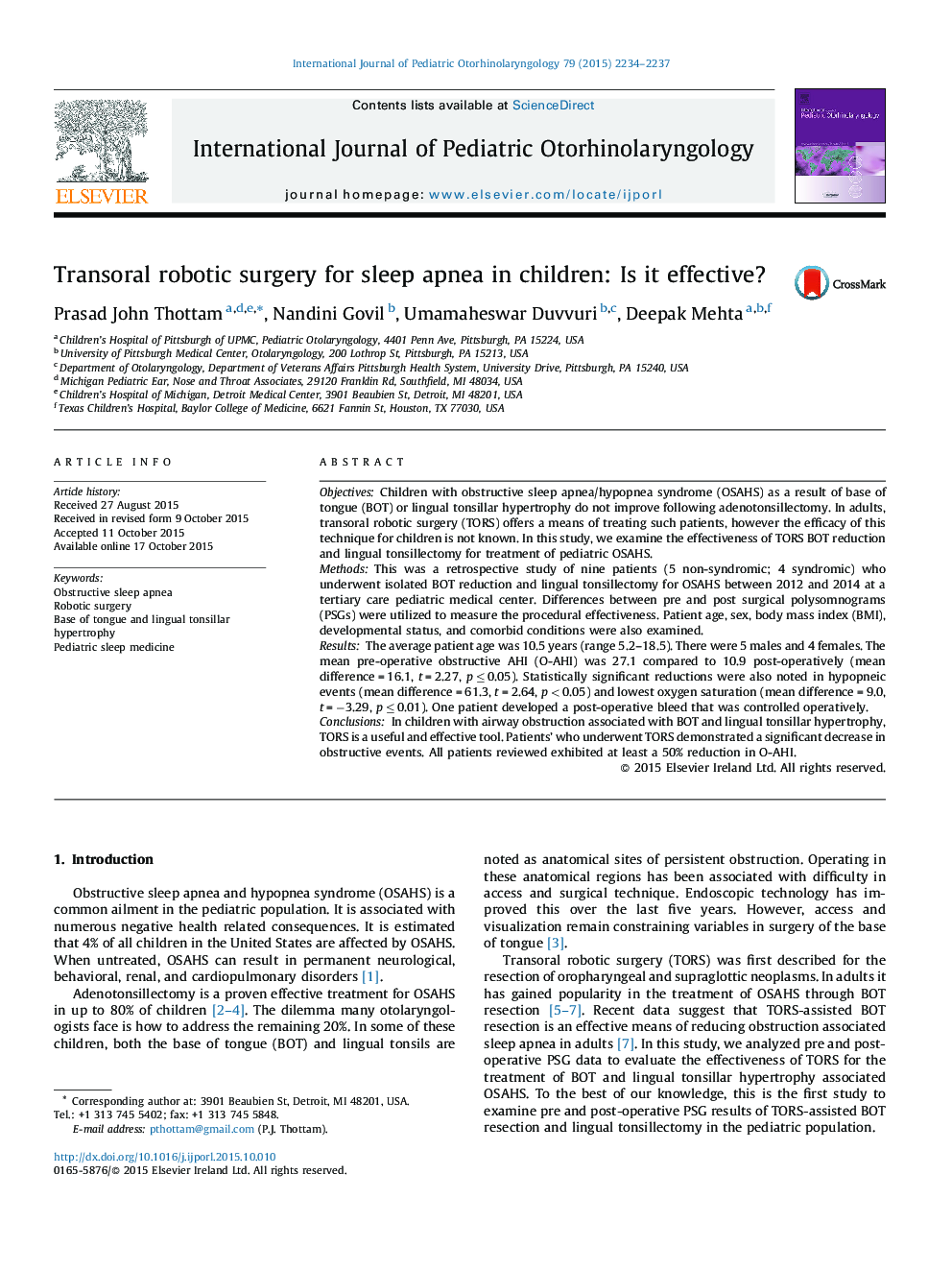| Article ID | Journal | Published Year | Pages | File Type |
|---|---|---|---|---|
| 4111592 | International Journal of Pediatric Otorhinolaryngology | 2015 | 4 Pages |
ObjectivesChildren with obstructive sleep apnea/hypopnea syndrome (OSAHS) as a result of base of tongue (BOT) or lingual tonsillar hypertrophy do not improve following adenotonsillectomy. In adults, transoral robotic surgery (TORS) offers a means of treating such patients, however the efficacy of this technique for children is not known. In this study, we examine the effectiveness of TORS BOT reduction and lingual tonsillectomy for treatment of pediatric OSAHS.MethodsThis was a retrospective study of nine patients (5 non-syndromic; 4 syndromic) who underwent isolated BOT reduction and lingual tonsillectomy for OSAHS between 2012 and 2014 at a tertiary care pediatric medical center. Differences between pre and post surgical polysomnograms (PSGs) were utilized to measure the procedural effectiveness. Patient age, sex, body mass index (BMI), developmental status, and comorbid conditions were also examined.ResultsThe average patient age was 10.5 years (range 5.2–18.5). There were 5 males and 4 females. The mean pre-operative obstructive AHI (O-AHI) was 27.1 compared to 10.9 post-operatively (mean difference = 16.1, t = 2.27, p ≤ 0.05). Statistically significant reductions were also noted in hypopneic events (mean difference = 61.3, t = 2.64, p < 0.05) and lowest oxygen saturation (mean difference = 9.0, t = −3.29, p ≤ 0.01). One patient developed a post-operative bleed that was controlled operatively.ConclusionsIn children with airway obstruction associated with BOT and lingual tonsillar hypertrophy, TORS is a useful and effective tool. Patients’ who underwent TORS demonstrated a significant decrease in obstructive events. All patients reviewed exhibited at least a 50% reduction in O-AHI.
